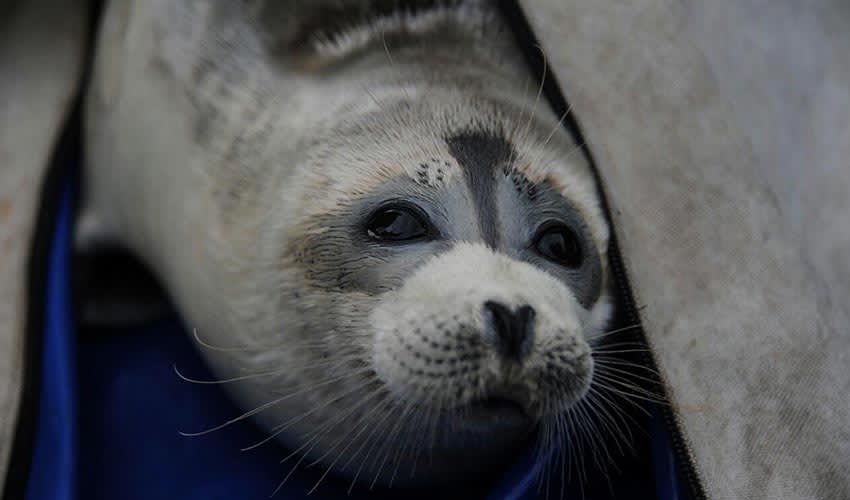Pusa
Some of the most cold-adapted seals in the world
One of the key characteristics of the Pusa genus is its adaptation to ice. These seals are often associated with icy habitats, and they’ve evolved special behaviors and body features to thrive in such conditions. For example, ringed seals, the most widespread of the group, use the claws on their front flippers to dig and maintain breathing holes in thick sea ice — a behavior not common among other seals. Caspian and Ladoga seals, although not currently living in ice-covered seas year-round, still show many of these inherited cold-weather traits, such as thick layers of blubber and dense fur, which helped their ancestors survive glacial periods. Their smaller bodies also reduce the energy needed to stay warm, which is useful in cold, isolated waters.
The Pusa seals are also unique because two of the three species (Caspian and Ladoga) are landlocked, meaning they live in bodies of water completely surrounded by land. This is incredibly rare for marine mammals. The Caspian seal lives only in the Caspian Sea, while the Ladoga seal is found in Russia’s Lake Ladoga. These isolated habitats have led to interesting evolutionary paths — they’ve adapted to smaller prey, different salinity levels, and limited migration opportunities compared to seals that roam wide oceans. This makes them particularly vulnerable to local environmental changes, like pollution or climate shifts, which can’t be escaped through migration.
A fun fact about the Pusa genus is that they’re some of the stealthiest hunters among seals. Their relatively quiet underwater movement and ability to dive for long periods without surfacing help them sneak up on fish in icy or murky waters. Also, baby Pusa seals are covered in soft, white “lanugo” fur at birth — not only does it keep them warm, but it also camouflages them against the snow and ice.
Species in this genus
Caspian seal
Haul out on ice during the winter months to rest, molt, and give birth — yes, ice!


